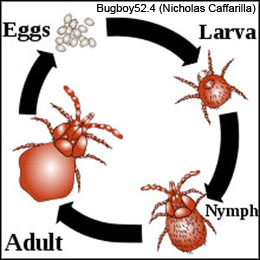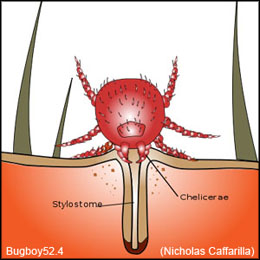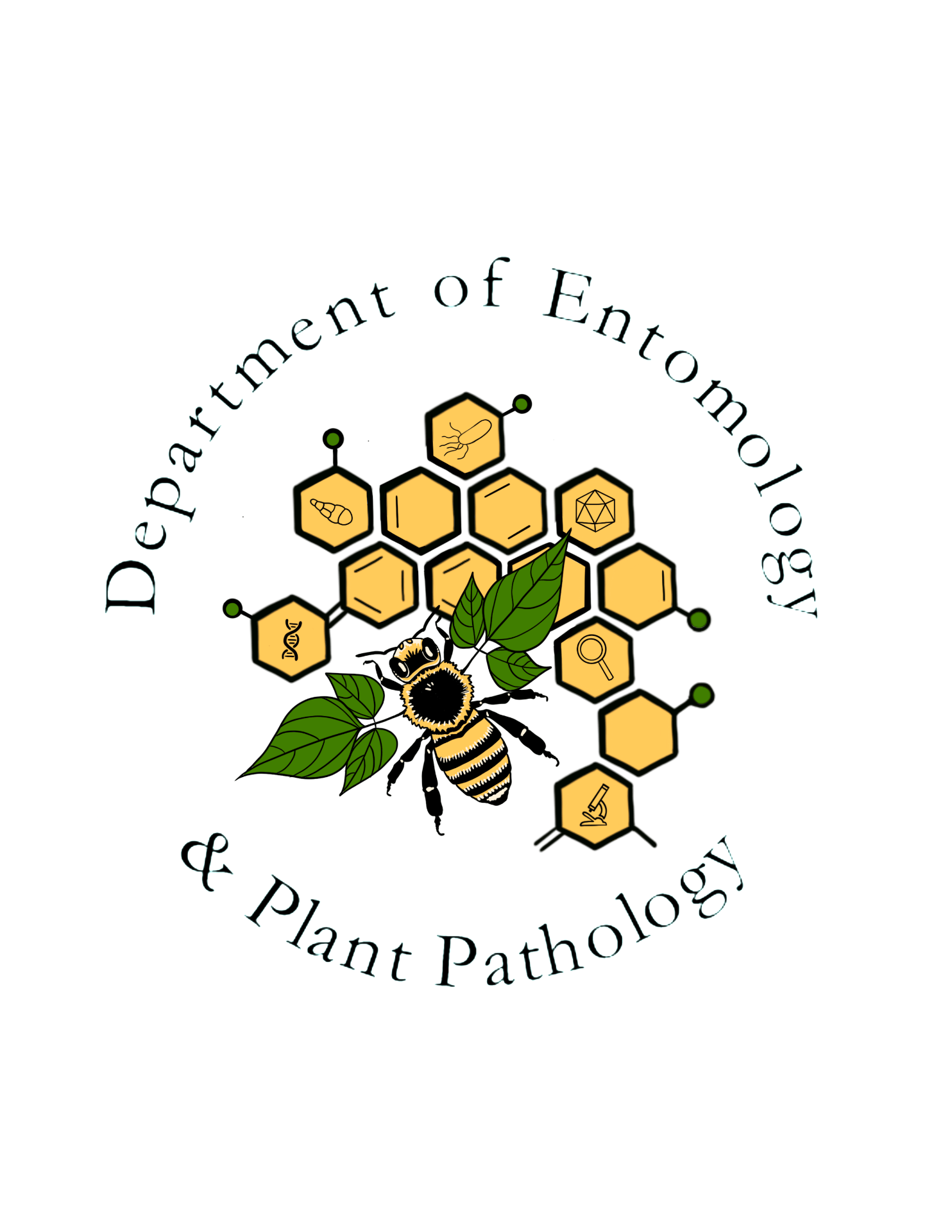Chiggers
Order: Acari
Family: Trombiculidae
Genus and species: Eutrombicula alfreddugesi (Oudemans), and others


Chiggers are minute and nearly invisible arthropods that are often responsible for swellings of the skin accompanied by intense itching. They are about 0.02 mm long and range from yellow to light red. They are the six-legged larvae of the mite family Trombiculidae, known as red bugs and harvest mites. Most chiggers are naturally ectoparasites of several classes of vertebrates, including mammals, birds, reptiles, and amphibians, while some species parasitize invertebrates. On their natural hosts they do not cause severe dermatitis. Chiggers are only accidental parasites of man. Intense itching caused by the mite saliva can continue long after the chigger has departed.
The eight-legged trombiculid nymphs and adults grow to about 1 mm long and are usually brilliant red. They are free-living predators of small arthropods and their eggs. Adults deposit eggs in soil or among vegetation. Larvae, which hatch from the eggs, can survive for long periods without food, but they must feed before they can pass to the next stage in the life cycle. Larvae eventually attach to passing hosts. Most larvae feed only once. They do not burrow into the skin. They insert their mouthparts into the host’s skin and use their saliva to digest the underlying tissues. A straw-like feeding tube, or stylostome, is slowly formed. Larvae suck digested host tissues and lymph through the stylostome. Blood is not taken. Larvae feed on digested cellular material for several days before dropping off their hosts and burrowing into the upper layers of soil, where they transform into nymphs and then adults. The life cycle requires about two months to complete, and there can be several generations each year.
Little research has been conducted on the chigger fauna of Arkansas, but our main pest species seems to be Eutrombicula alfreddugesi (Oudemans). It occurs throughout the state but is less abundant in areas of poor drainage and little forest, such as the delta counties of eastern Arkansas. It is often associated with oak-hickory forest mixed with conifers. Eutrombicula splendens (Ewing) is also fairly common in Arkansas, but it is most abundant in moist situations. Dense populations of these mites can disrupt military training, recreation, and various economic activities, including forestry operations. Early travelers in Arkansas often commented on clouds of mosquitoes and hoards of ticks, but they rarely if ever mentioned chiggers. It was not until early in the twentieth century that the role of chiggers in the production of human dermatitis was generally recognized.
In Arkansas, chiggers can be found from early May to mid October. Cases of human trombiculosis are worst during the period from late June through mid September, when vegetation is heaviest. Research on eastern collared lizards in Izard County, Arkansas, showed that lizards emerging from hibernation in April were free of chiggers and remained so until June. Chigger infestations continued from June through October, peaking in July. The most common chigger on the lizards was E. alfreddugesi.
When a chigger attaches to a human being, it is not usually noticed immediately, and it has time to inject its saliva before itching starts. When itching begins, the chigger is easily removed by even the lightest scratching, but itching can continue for several days or weeks because of the injected material. On humans, chiggers prefer areas where clothing is taut, such as socks, waist bands, and underarm areas.
There are several lines of defense that can be taken against chiggers. Chiggers thrive in areas with undisturbed soil, dense populations of small host animals, absence of heavy grazing, and thicket or scrub type vegetation. Elimination of these conditions should help to reduce chigger populations. Mowing and application of appropriate lawn pesticides are helpful. Application of personal insect repellants to shoes, socks and lower pant legs, and tucking pant legs into boots, are very helpful measures. Upon returning from an area suspected of being chigger infested, bathing or showering immediately and laundering the clothing are highly effective control measures.
Chiggers are not known to carry human diseases in North America.
